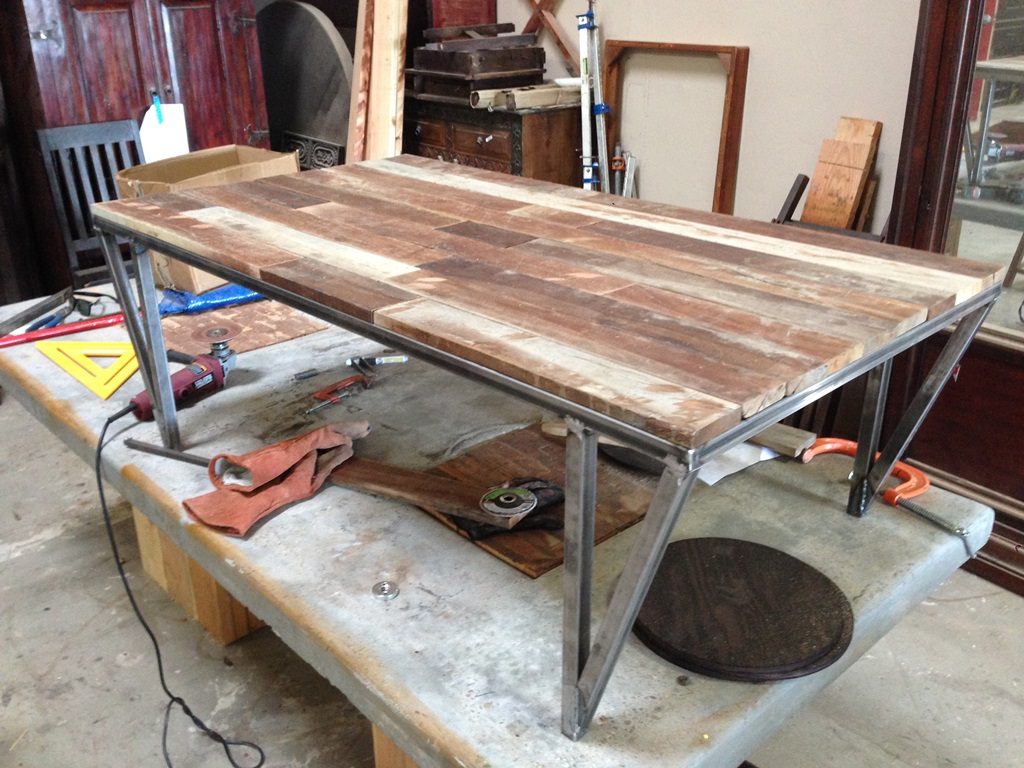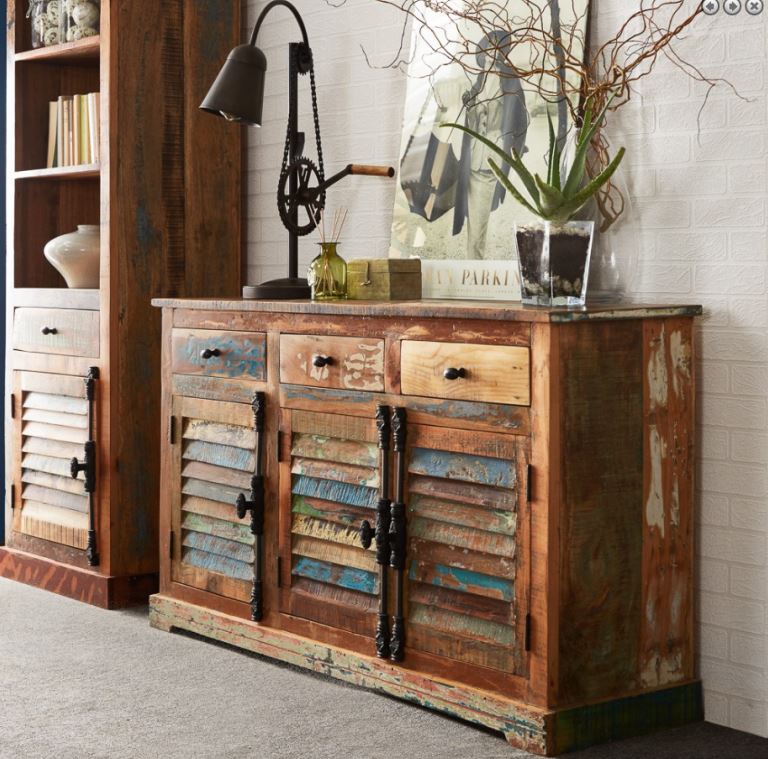If you’re tired of the way your old wood furniture looks, repaint it. You’ll need to strip off the old paint or varnish and sand down the piece first. You can use a palm sander to do the job faster, but sanders can remove too much wood. Better to fold a piece of sandpaper in fourths and sand the piece by hand. How good a piece looks after painting depends on how well you prepared and sanded the wood furniture.

Step 1 – Put the furniture on a tarp to protect the floor below.
Step 2 – Remove hardware from the piece and set aside.
Step 3 – Don goggles, the facemask and gloves when working with wood strippers. Place the old wood furniture on a thick layer of newspaper to catch any drips that fall and make cleanup easier.
Step 4 – Remove the old paint or varnish on the wood furniture piece. For a painted surface, apply a thick coat of paint stripper with a rag. Work only in manageable sections and in a well-ventilated area.
Step 5 – Allow the stripper to sit on the wood until soft — about 10 to 15 minutes — and the putty knife can cut through the paint to the wood below. If the paint doesn’t scrape away easily, reapply stripper to the area and give it another five minutes.

Step 6 – Scrape away as much paint as possible, using the scraper or putty knife. If the wood piece has multiple layers of paint or if it’s enamel paint, you may have to do more than one application. Some strippers should be removed with turpentine, paint removers or water. If your piece has varnish on it, scrub it away with steel wool.
Step 7 – Vacuum up dust and other debris on the wood.
Step 8 – Fill any cracks or holes with wood patch, using a putty knife to press wood patch into the cracks or holes. Leave the wood patch a little higher than the surface of the door and try to match the wood putty with the color of the wood. Depending on the brand of wood filler you’re using, allow 15 minutes to two hours of drying time.
Step 9 – Sand the wood sections with 150-grit sandpaper. When sanding, always sand in the direction of the wood grain. Vacuum up the dust. Repeat this step using 180-grit sandpaper, then vacuum. Sand one last time with 220-grit sandpaper until the wood is smooth to the touch. Vacuum all the pieces again.

Step 10 – Wipe the entire piece of old furniture with a tack cloth to eliminate all dust. Vacuum the area where you’re going to paint the wood. If the wind blows through, it can transfer dust to the surface of the primer or paint and ruin the finish.
Step 11 – Mix the white or gray water-based primer with the paint stirring attachment on the drill. Brush the primer on all areas you’re going to paint. Allow the primer to dry for 24 hours. If the day is humid, the drying time may take longer.
Step 12 – Mix the water-based paint with the drill and stirring bit. Stir the paint for five to seven minutes to thoroughly mix the contents.
Step 13 – Paint the surface with a brush. Use a narrow brush for painting corners or narrow trim. The website Wallpaper on Walls recommends a 2-inch natural-bristle paintbrush for painting wood furniture and a 1- to 1 1/2-inch flat-tip brush for tight and narrow places. You also can use a sponge type or bristle brush. Apply a second coat of paint. Allow the second coat of paint to cure for three days.
Step 14 – Reattach the hardware on the wood furniture after the paint is completely dry.